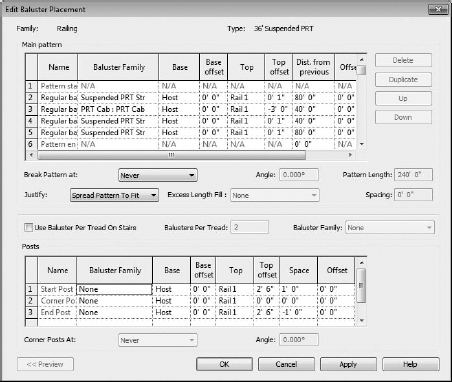How to Approach Stairs and Railings
Designing and reiterating complex stairs and railings in just about any software application can be difficult. It's likely that you'll need to deeply understand the rules and constraints of the application; in effect, you're learning the language of the application. To communicate fluently in that language, you need to be able to think fluently. You almost have to be able to think beyond the individual words and begin to arrange whole ideas.
Regardless of how well you know how to use a particular application, you have to contend with imagination and creation of elegant and complex design issues. Sometimes stairs and railings are straightforward and functional (for example, a steel or concrete egress stair) where there's not a lot of room for thinking outside the box. But in many cases, stairs and railings are conceived as feature elements within a space. They'll be touched and experienced up close. They may be extraordinarily complex and sculptural—almost an inhabited sculpture (Figure 16.1).
When these two worlds collide—amazing design idea meets perceived software functional limitation—the result is understandably a lot of frustration for an entire design team, especially when you look back at the kinds of designs that were imagined and realized with simple paper and pencil. Computers were supposed to make this easier, right? Fortunately, you have a few options. Figure 16.2 illustrates the kind of stair that would challenge almost any 3D modeling program.
FIGURE 16.1 Detail of the feature stair in Apple's Fifth Avenue retail store
FIGURE 16.2 Complex feature stairs

For example, you can use a generic modeling application such as SketchUp, Bonzai, 3ds Max, Maya, Rhino, and so on to model your stair and railing designs. Of course, stair and railing creation will require greater fluency compared with modeling other, more rectilinear objects. But there's a drawback. Even though you'll eventually come to understand the rules for creating and manipulating geometry in a generic modeling application, what still remains difficult is the design idea and managing design iteration. Although many of the generic applications on the market give you the tools to design complex forms, they seldom give you the rules to manage the iteration of your design.
In Revit, the situation is often reversed: you'll frequently have the rules to iterate and manage your design. But the tools of geometry creation can be limiting at times. In other words, Revit is purpose-built for designing building elements and relating them to the rules of likely constructed relationships (doors associate with walls, furniture associates with floors, and so on). Revit isn't simply another generic modeler. The application is biased toward relationships specific to designing a building and maintaining those relationships as the design changes. But to make things a bit more complicated, there's another layer. Within the general language of Revit, there's a specific language to creating stairs and railings. Figure 16.3 illustrates the Edit Baluster Placement dialog box for a complex baluster condition.
FIGURE 16.3 Edit Baluster Placement dialog box for complex railings configuration

From a design iteration standpoint, it's important that your building elements understand their relationships to other elements. These elements also need to view, schedule, and maintain change appropriately in a parametric model. To accomplish this, you can use the inside-the-box stair and railing functionality in some interesting and innovative ways.
A good approach has always been to try to find the solution that is both technically correct and aligned with the best intentions of the use of BIM (the life cycle of “cradle to cradle”). At the same time, we believe that you should strive to take implementability into account. We have two simple approaches to determining when to use an in-the-box solution and when to think out of the box:
- Is what you're trying to design best defined as spreadsheet (regular-shaped, repeated elements) or sculpture (organic, freeform)? If what you're designing can be described within a spreadsheet, then it's likely that you'll be able to use the Stairs tool out of the box (think egress stair). But if what you're trying to design cannot easily be defined within the confines of a spreadsheet? It's likely you'll be working outside the constraints of the default Stairs tool. This is because there are just too many exceptions and peculiarities to make using the default Stairs tool worthwhile.
- Because your design might not fit within the confines of the Stairs tool doesn't mean that you can't maintain a proper balance of project part–whole relationships when using other tools like the Family Editor. Remember that the Family Editor lets you maintain many relationships in a project by editing single elements and then reloading to maintain design iteration.
In conclusion, it's important that whatever your approach, inside or outside of the stair and railing toolbox, your solution should maintain a balance of efficient predictability. Design efforts are distributed across people and teams, and it's important that your approach is not so unique that anyone else would not be able to understand how to modify your design when it changes (and it will). And with that, let's move on to describing some essential parts of stairs and railings.

